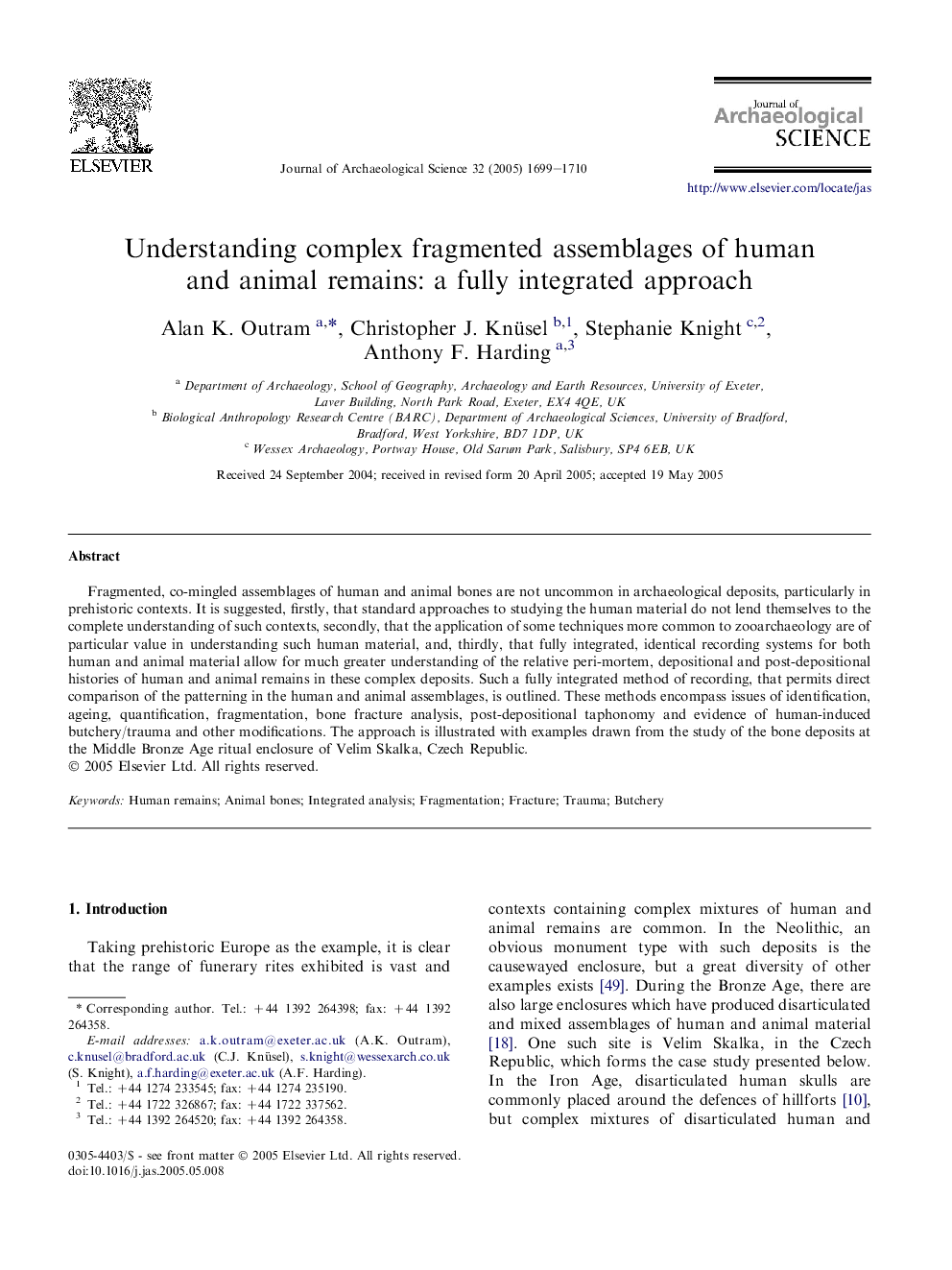| Article ID | Journal | Published Year | Pages | File Type |
|---|---|---|---|---|
| 10499355 | Journal of Archaeological Science | 2005 | 12 Pages |
Abstract
Fragmented, co-mingled assemblages of human and animal bones are not uncommon in archaeological deposits, particularly in prehistoric contexts. It is suggested, firstly, that standard approaches to studying the human material do not lend themselves to the complete understanding of such contexts, secondly, that the application of some techniques more common to zooarchaeology are of particular value in understanding such human material, and, thirdly, that fully integrated, identical recording systems for both human and animal material allow for much greater understanding of the relative peri-mortem, depositional and post-depositional histories of human and animal remains in these complex deposits. Such a fully integrated method of recording, that permits direct comparison of the patterning in the human and animal assemblages, is outlined. These methods encompass issues of identification, ageing, quantification, fragmentation, bone fracture analysis, post-depositional taphonomy and evidence of human-induced butchery/trauma and other modifications. The approach is illustrated with examples drawn from the study of the bone deposits at the Middle Bronze Age ritual enclosure of Velim Skalka, Czech Republic.
Related Topics
Physical Sciences and Engineering
Materials Science
Materials Science (General)
Authors
Alan K. Outram, Christopher J. Knüsel, Stephanie Knight, Anthony F. Harding,
